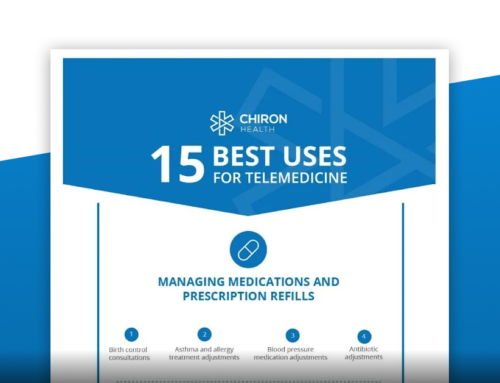A study by the Association of American Medical College (AAAMC), The Complexities of Physicia Supply and Demand: Projections from 2013 to 2015, predicted that the US could be facing up to a 90,000 physician shortage by 2025. And that was before the COVID19 pandemic. As for primary care providers, the US was looking at a shortage of about 31,100 physicians by 2025 before COVID19 hit. So why are we predicted to be without so many PCPs?
Why is there a Primary Care Physician shortage?
The shortage of PCPs and other non-primary care providers is especially disconcerting given the aging population and the level of care it will require. Clearly, the healthcare industry needs to make some fast changes in order to guarantee high-quality access to care for our elderly. To do so, however, it’s first important to understand why the US is soon to face a massive shortage of PCPs.
The ACA has given people more access to basic health care
Thanks to the Affordable Care Act, more people in the US now have insurance than ever before. While this is fantastic news (seriously, we couldn’t be happier), it has resulted in more people requiring access to basic healthcare.
While the purpose of increasing access to basic healthcare is to keep people out of the Emergency Room and save money in the long run, it has caused a sharp increase in the demand for primary care doctors.
Medical schools haven’t been keeping up with demand
It’s no secret that medical schools have an incredibly selective process (rightfully so) that result in extremely high rejection rates. While some medical schools have begun opening up more slots, the lack of trained physicians coming out of medical school has presented a problem over the last several years.
Too few physicians are practicing primary care
The percentage of our current physician workforce practicing primary care is at an all-time low. With the ACA increasing demand for primary care but medical student interest in primary care decreasing, the shortage has snowballed over the last few years.
Looming demographic changes
As we said before, our population is aging. As our baby-boomers retire and start to require increased care for chronic conditions, the demand for primary care providers has only increased.
The COVID19 pandemic
If the existing pressures on primary care physicians weren’t enough, the COVID19 pandemic has threatened their already precarious financial stability. Despite many physicians quickly adopting telehealth solutions, if patients stay out of the office too long, a recent Washington Post article says physician practices face existential peril. Already the health-care system nationally has suffered a 55 to 70 percent decrease in revenue. And as of this writing, many states are still enforcing stay-at-home orders with a vaccination still months or more away.
So what can be done about the shortage of PCPs?
An Annals of Family Medicine review estimated that an additional 44,340 PCPs will be needed by 2035. We’ve already established that a shortage of primary care providers and a clear need for more exists. We’ve also determined what a few of the contributing factors are. Now let’s look at what the healthcare industry can do in the next two decades to meet the incresing demand for PCPs.
Open more residency slots
The AAFP projected an additional 1,700 primary care physician residency positions need to be added by 2035, a 21% increase from the current opening rates of residency positions.
Keep more medical students in primary care
Keeping more medical students in primary care is, of course, easier said than done. The problem is largely a financial one. Medical students graduate with tens of thousands of doallarsin debt. The truth is, there is more money to be made in specialty care than in primary care.
However, researchers at the Annals of Family Medicine have shown that expanding community-based graduate medical education training into areas like teaching health centers and rural training tacks may increase the number of graduating medical students that stay in primary care.
Expand medical school enrollment capacities
Take, for example, Utah. The state legislature passed a bill in 2013 that gave ongoing $10 million in funding to the University of Utah’s School of Medicine to expand jits enrollment. The school has already increased its enrollment by 50%.
Because medical schools have far more qualified applicants than they do room in their program, providing additional funding to expand enrollment allows medical schools to maintain their high standards but afford to take on more students.
Innovate, innovate and…innovate
At a certain point, the delivery of healthcare in the US must change. As things stand now, the system is not only running short on resources, it is running inefficiently. Primary care providers are flooded with patients, unable to provide quality continuing care to many of them.
More resources need to be put toward exploring and researching new models of care like team-based care and patient-centered medical homes. These models should aim to improve health care delivery while also reducing the number of patients per primary care physician. Even the incorporation of tools like telemedicine software that reduce staff resources for PCPs should be explored.
Closing remarks
By 2035, an estimated 44,340 PCPs will be needed to match the ever-growing demand in the US. A few of the most common causes of our PCP shortage are as follows:
- Increased access to healthcare
- Inability of medical schools to keep up with physician demands
- Lack of students choosing primary care
- Demographic changes in the US
- The current COVID19 pandemic
Only by opening more residency and medical school slots, keeping more medical students in primary care, and innovating the way primary care is delivered today can the US overcome the primary care physician shortage.
About Direct Health
Direct Health is working to change how healthcare is delivered by recreating the doctor-patient relationship. With the secure messaging app, physicians and patients have the ability to connect via text, call, or video, from anywhere and on their schedule. This enables patients to chat with their doctor, vet, or therapist at any time, and clinicians to extend care and get paid without extra overhead or burdensome schedules. With over 20,000 doctors across the platform, Direct Health is leading the way in the future of healthcare. For more information, visit http://www.directhealth.us.






Leave A Comment